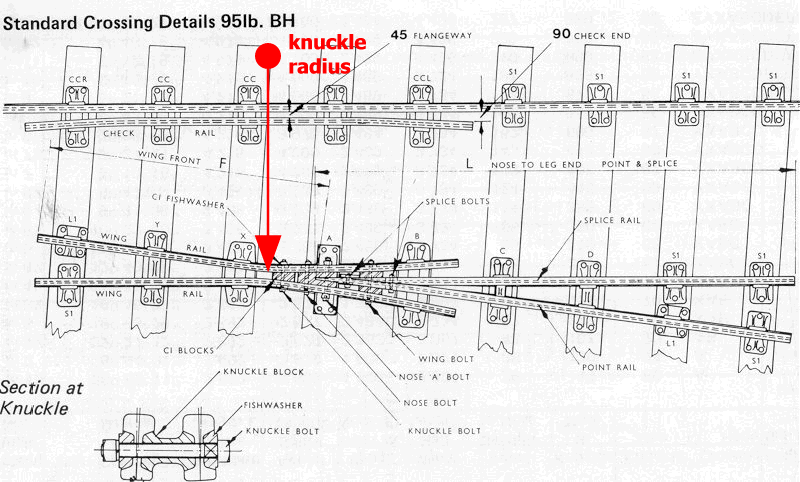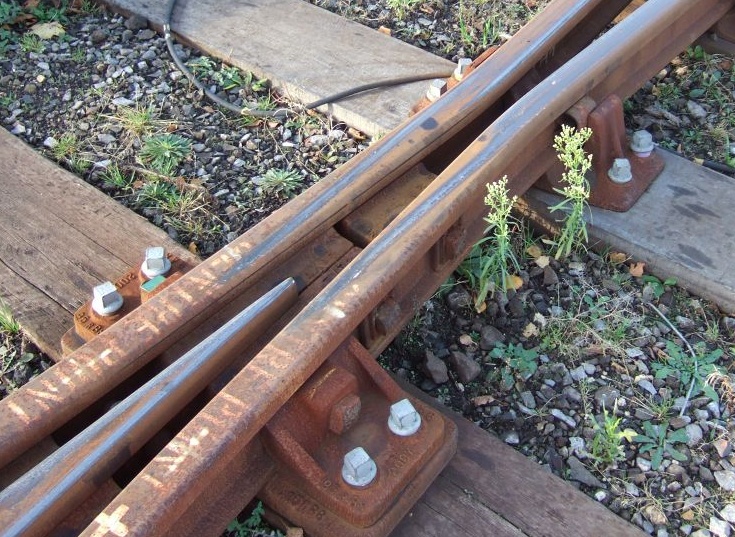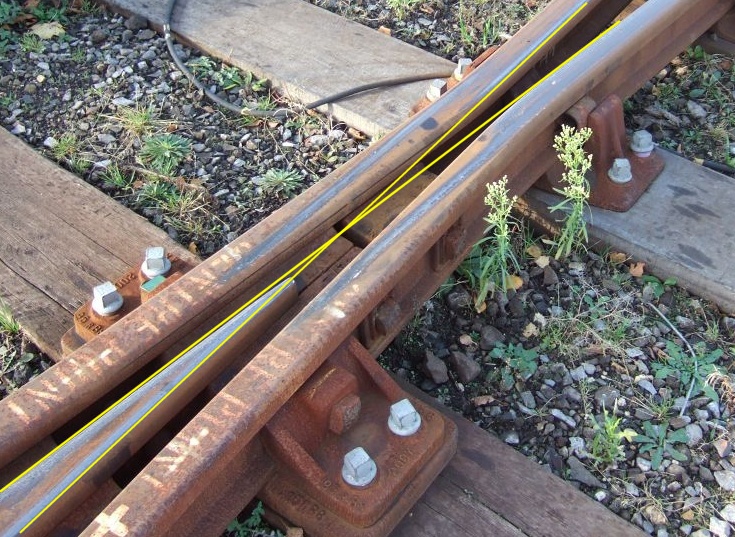Templot Club Archive 2007-2020
|
|||
| author | remove search highlighting | ||
|---|---|---|---|
|
posted: 4 Apr 2011 00:21 from: Rob Manchester
click the date to link to this post click member name to view archived images |
Hello, I am a little confused by a couple of points relating to the cant of the rail used in model track. Firstly the makers of some track systems have ready to run track and components that cant the rails at the correct ( 1 in 20 for the UK ) angle as per the prototype. If this is the case what happens at the vees of switch and crossing work ? I would have thought that the rails forming the vee would have been vertical and assumed that my filing jigs them this way. Secondly, what happens when track gauges are placed on rails that are canted ? My track gauges ( 4mm and 7mm ) seem to fit the rail heads fairly snuggly but don't they tend to force the rails into a vertical position rather than the 1 in 20 angle intended ? And what happens to check rails and wing rails...are they vertical ? I am only thinking of BH trackwork, I haven't thought about FB yet . Any one with a good explanation ?? Rob |
||
|
posted: 5 Apr 2011 06:14 from: Martin Wynne
click the date to link to this post click member name to view archived images |
Hi Rob, To allow for the 1:20 cant in the rails, the bend in the wing rail at the knuckle is not as sharp as many modellers make it*. It is in fact a short length of curve, and a slight twist is introduced in the rail over the length of the curve so that the canted wing rails can lie level. They should be fractionally above the level of the vee nose to allow for the coning angle on the wheels, but that is done by removing metal from the vee top** (3/16" at the tip, running out in 15"). See the section through the knuckle in this diagram of an REA bullhead crossing: 2_050420_590000000.png  On GWR crossings, the knuckle radius matches the crossing angle in feet. So a 1:10 crossing has a 10ft radius at the knuckle, and so on. On REA crossings (diagram above) the knuckle gap is specified instead, and the rail is curved to a knuckle radius accordingly. For a 1:10 crossing, the knuckle gap is 2.5/32" (i.e. the knuckle gap is wider than the normal flangeway gap of 1.3/4"). Here's a pic showing an almost as-new bullhead crossing. You can see from the wear pattern on the knuckle radius how the twist in the rail has changed the angle of the rail top. Notice also the heavy bolted slab & bracket "A" chair construction, holding the wing rail down level. Thanks to Mick Nicholson for the pic: 2_061131_520000000.jpg  © Mick Nicholson For the vee rails, the rails are vertical where they are spliced together at the nose. A twist is made in the rails to return them to the usual 1:20 cant -- the twist is usually between the B and C chairs in the first diagram above. It's not an easy twist to replicate, because the gauge face of the rail must stay in a straight line as the rail foot is bent outwards. From about 1970 to 2000, flat-bottom turnouts in the UK were made with the rails vertical, to avoid these problems and allow a much smaller range of baseplates to be needed. *Some modellers even go to the length of filing a nick in the wing rail in order to bend a sharp angle at the knuckle, which looks awful and is entirely unnecessary, and looks nothing like the picture above. **Well worth replicating in he model, for much smoother running. Here I have added the gauge lines in yellow, and you can see that the vee nose is blunted back from the gauge intersection (fine point, FP), and taken down below the level of the wing rails. Only a few thou is necessary in the model to reproduce this, but it can make a big difference in the running quality: 2_270449_340000000.jpg  regards, Martin. |
||
|
posted: 6 Apr 2011 00:01 from: Rob Manchester
click the date to link to this post click member name to view archived images |
Hi Martin, Thanks for the reply and the pictures. I am making sure that my vees are blunt enough and drop down slightly below wing rail level to give the wheels a smoother ride. BTW I stopped off at the SVR on the way back from taking the mother-in-law to lunch the other day. A small prarie was doing the honours on the passenger runs. First time this year I have smelt the real thing - lovely, and it always a real pleasure to sit a while in the signal box. Must try and get some more days out this year. Templot learning going slowly but progressing well. Going to have a crack at transition curves tomorrow. All the best Rob |
||
| Please read this important note about copyright: Unless stated otherwise, all the files submitted to this web site are copyright and the property of the respective contributor. You are welcome to use them for your own personal non-commercial purposes, and in your messages on this web site. If you want to publish any of this material elsewhere or use it commercially, you must first obtain the owner's permission to do so. |